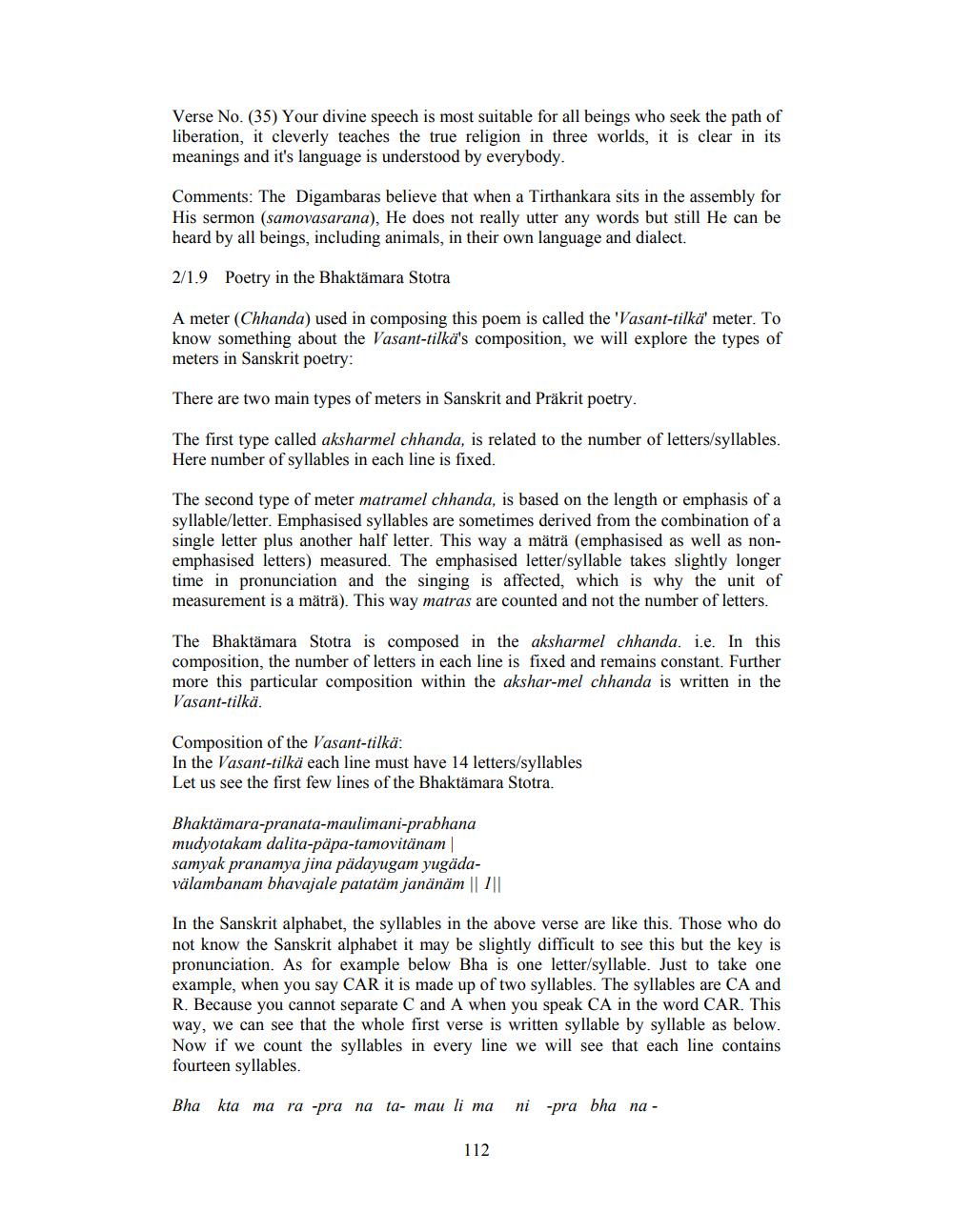________________
Verse No.(35) Your divine speech is most suitable for all beings who seek the path of liberation, it cleverly teaches the true religion in three worlds, it is clear in its meanings and it's language is understood by everybody.
Comments: The Digambaras believe that when a Tirthankara sits in the assembly for His sermon (samovasarana), He does not really utter any words but still He can be heard by all beings, including animals, in their own language and dialect.
2/1.9 Poetry in the Bhaktämara Stotra
A meter (Chhanda) used in composing this poem is called the 'Vasant-tilkä' meter. To know something about the Vasant-tilkä's composition, we will explore the types of meters in Sanskrit poetry:
There are two main types of meters in Sanskrit and Präkrit poetry.
The first type called aksharmel chhanda, is related to the number of letters/syllables. Here number of syllables in each line is fixed.
The second type of meter matramel chhanda, is based on the length or emphasis of a syllable/letter. Emphasised syllables are sometimes derived from the combination of a single letter plus another half letter. This way a mäträ (emphasised as well as nonemphasised letters) measured. The emphasised letter/syllable takes slightly longer time in pronunciation and the singing is affected, which is why the unit of measurement is a mäträ). This way matras are counted and not the number of letters.
The Bhaktämara Stotra is composed in the aksharmel chhanda. i.e. In this composition, the number of letters in each line is fixed and remains constant. Further more this particular composition within the akshar-mel chhanda is written in the Vasant-tilkä.
Composition of the Vasant-tilkä: In the Vasant-tilkä each line must have 14 letters/syllables Let us see the first few lines of the Bhaktämara Stotra.
Bhaktämara-pranata-maulimani-prabhana mudyotakam dalita-päpa-tamovitänam samyak pranamya jina pädayugam yugädavälambanam bhavajale patatäm janänäm || 7||
In the Sanskrit alphabet, the syllables in the above verse are like this. Those who do not know the Sanskrit alphabet it may be slightly difficult to see this but the key is pronunciation. As for example below Bha is one letter/syllable. Just to take one example, when you say CAR it is made up of two syllables. The syllables are CA and R. Because you cannot separate C and A when you speak CA in the word CAR. This way, we can see that the whole first verse is written syllable by syllable as below. Now if we count the syllables in every line we will see that each line contains fourteen syllables.
Bha kta mara -pra na ta- mau li ma
ni-pra bha na -
112




